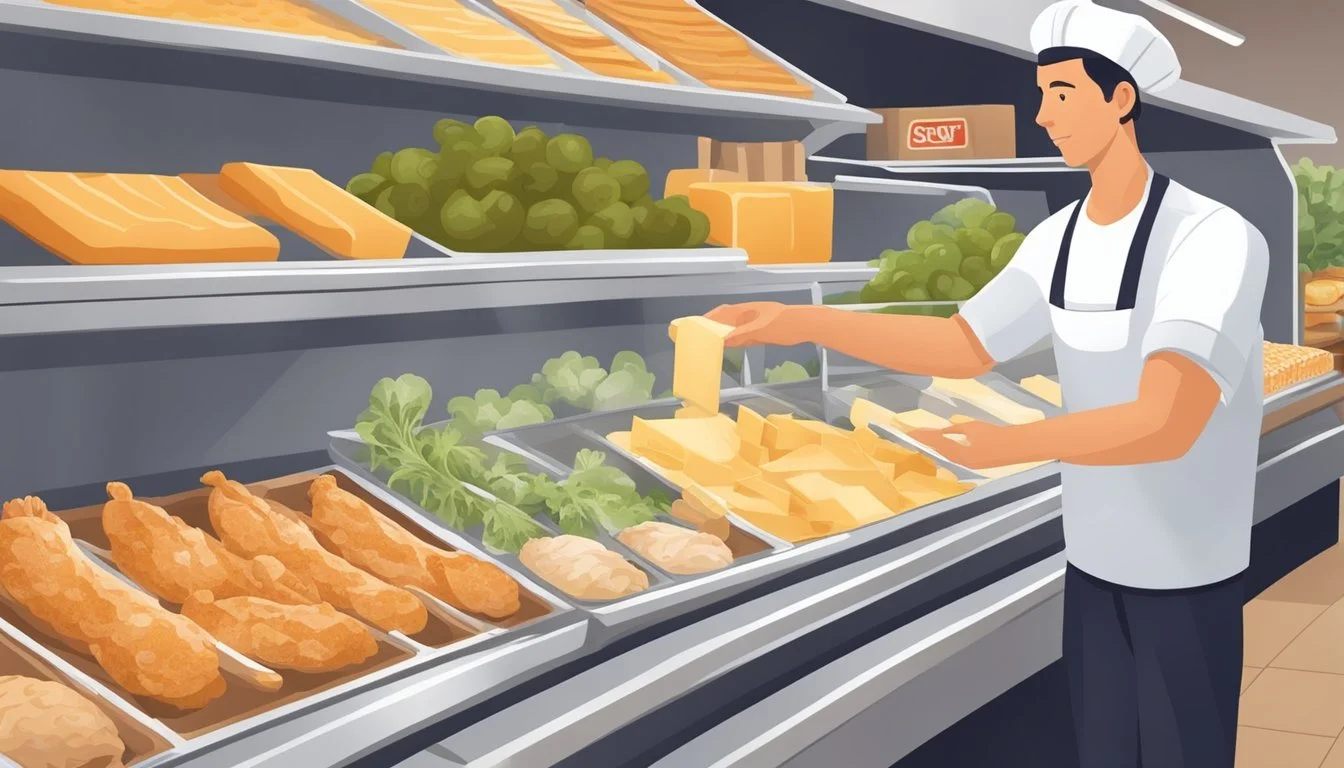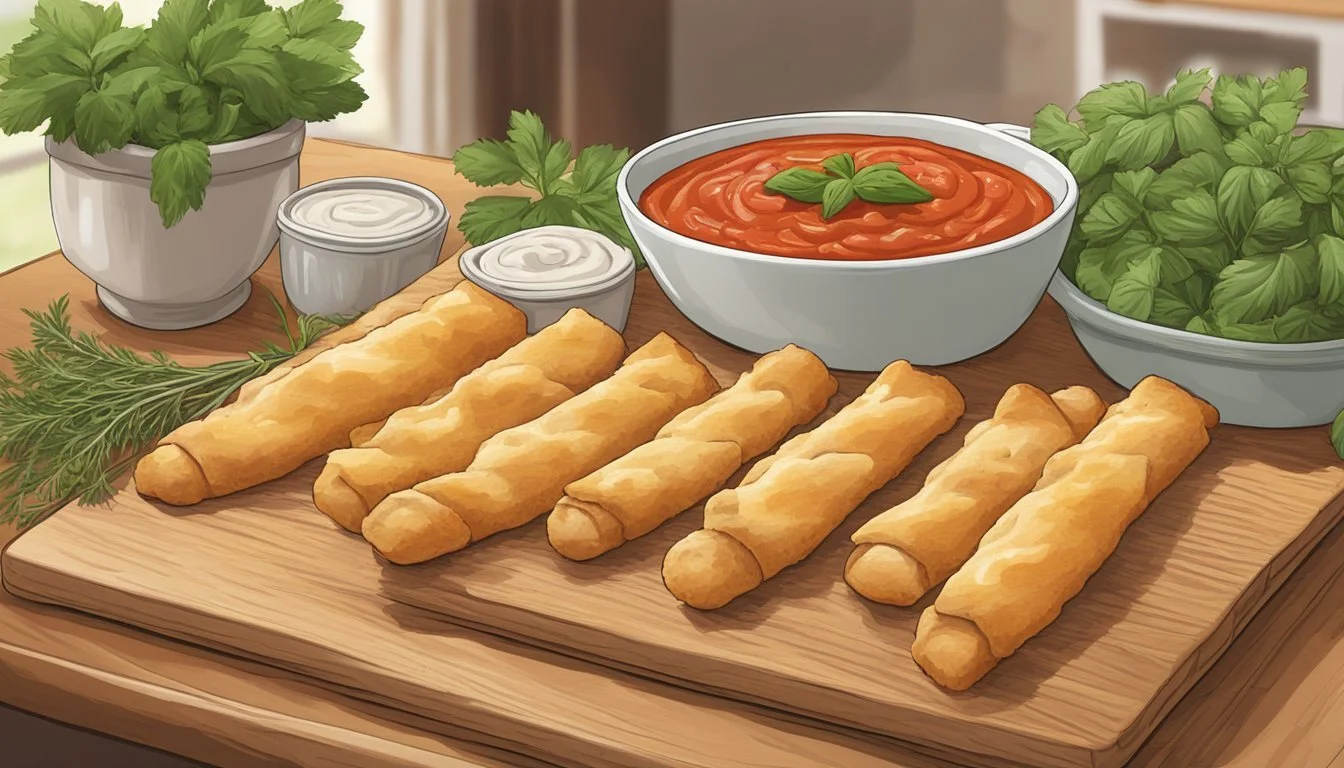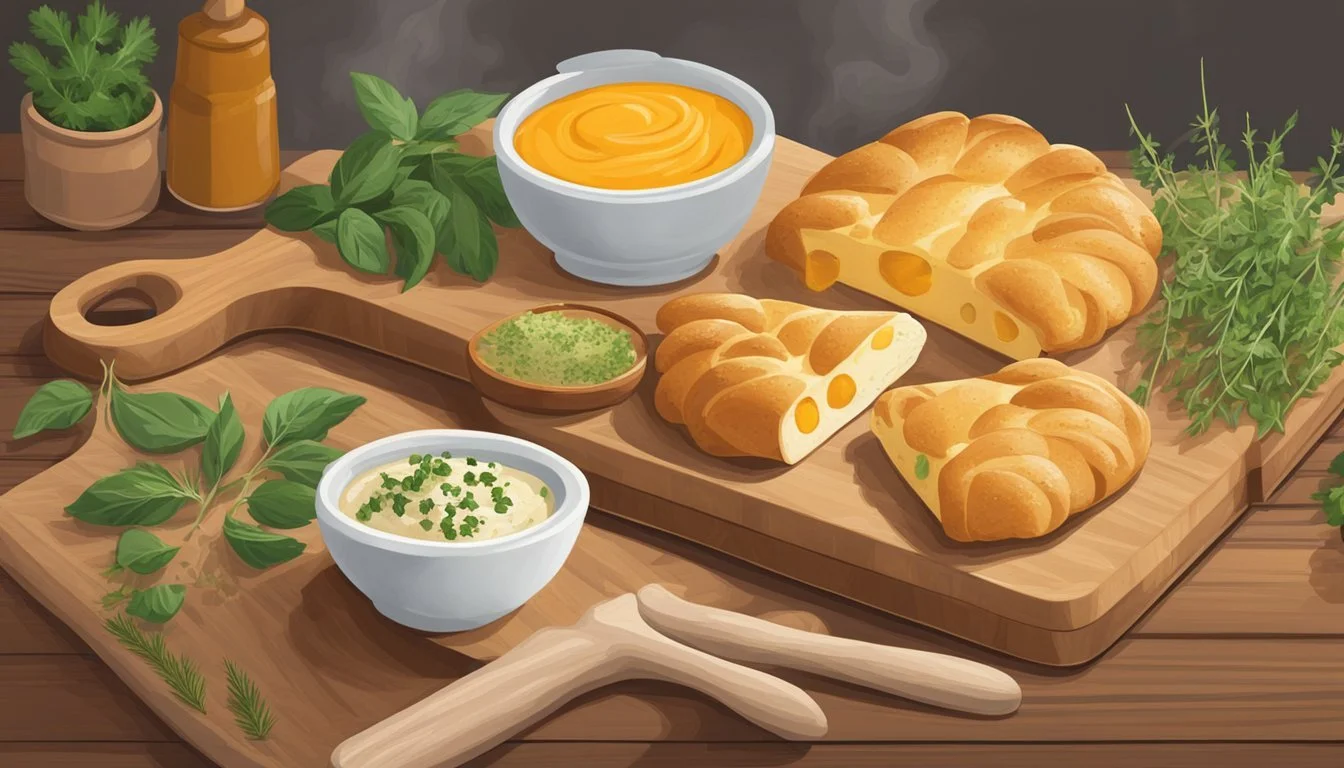How Long Do Chicken and Cheese Stuffed Breadsticks Last?
Freshness Tips
Chicken and cheese stuffed breadsticks are a delightful snack or appetizer that combines gooey cheese and savory chicken, all wrapped in a crispy dough. While they are best enjoyed fresh out of the oven, many wonder how long these delectable treats can last. Properly stored in the refrigerator, chicken and cheese stuffed breadsticks can last up to 3-4 days.
Storing them correctly is crucial to maintaining their flavor and texture. Place the breadsticks in an airtight container to keep them from drying out. When you’re ready to enjoy them again, reheating them in the oven will help retain their crispiness.
Whether for a quick snack or a party platter, knowing how long these breadsticks last ensures you always serve them fresh. Understanding the storage and reheating tips will keep them tasting delicious for days after baking.
Understanding Chicken and Cheese Stuffed Breadsticks
Chicken and cheese stuffed breadsticks combine savory chicken, gooey melted cheese, and bread to create a delicious appetizer or snack. This tasty treat can come in varied forms, each offering a unique twist on flavors and ingredients.
Components and Varieties
Chicken and cheese stuffed breadsticks are typically made with pizza dough or pre-made breadstick dough. Inside, they are filled with a mixture of shredded chicken and different types of cheese, including mozzarella, cheddar, or parmesan.
Butter and garlic flavor the breadsticks, often brushed on top before baking. Some recipes also incorporate herbs such as basil or oregano for added flavor. String cheese is another option for the cheesy filling, wrapped inside the dough to create a gooey center once baked.
These breadsticks can be baked or fried. Adjusting the ingredients and methods can cater to tastes such as Monterey Jack or even pepper jack cheese for a spicier touch. Overall, the variety in recipes allows for numerous delicious combinations.
Nutritional Profile
Chicken and cheese stuffed breadsticks offer a mix of macronutrients and minerals. A standard serving will typically include protein from the chicken and cheese, carbohydrates from the dough, and fats from the cheese and butter.
Calories per serving can vary greatly depending on the recipe, often ranging from 200 to 300 calories. The type of cheese used affects the saturated fat and cholesterol content: mozzarella is lower in fat compared to cheddar or pepper jack. Sodium levels can be high, especially if processed cheeses are used.
The breadsticks may also offer some fiber from the dough and potentially some vitamins depending on added ingredients like herbs. On the downside, the presence of trans fats should be minimal if using quality ingredients and avoiding heavily processed foods.
Preparation Guidelines
Chicken and cheese stuffed breadsticks begin with a solid dough base, careful cheese stuffing, and correctly applied seasonings before being baked to perfection.
Creating the Dough Base
Creating a dough base is central to ensuring the breadsticks are fluffy and flavorful. Homemade pizza dough is highly recommended, though store-bought pizza dough can be a convenient alternative. Combine flour, water, yeast, and sugar for a dough that rises well.
Use a pizza cutter to divide the dough into equal portions. Nonstick cooking spray or parchment paper on the baking sheet prevents sticking and ensures easy cleanup. Allow the dough to rest and rise before shaping, ensuring it's pliable. This step minimizes cook time discrepancies and promotes a consistent texture.
The Cheese Stuffing Process
For the stuffing, mozzarella sticks or cheddar cheese are excellent choices. Divide the rolled-out dough into rectangular pieces, each large enough to wrap around a cheese stick.
Wrap each piece tightly, ensuring to seal the edges well to avoid melted cheese escaping during baking. Use a bit of water or melted butter to help seal the seams. Place stuffed dough seam-side down on a parchment-lined baking sheet to keep the cheese in place.
Seasonings and Enhancements
Seasonings enhance the flavor profile significantly. Mix melted butter with garlic powder, salt, and dried parsley for a classic garlic bread taste. Italian seasoning, oregano, and grated parmesan cheese add additional depth of flavor.
For those who enjoy a bit of spice, red pepper flakes can be included. Use a brushing technique to evenly coat the dough before baking. This step not only adds flavor but also creates a beautiful golden crust.
Baking Instructions
Preheat the oven to around 375°F (190°C). Place the breadsticks 2-3 inches apart on the baking sheet to allow for even cooking. Bake for 12 to 14 minutes or until the breadsticks are golden brown and the cheese is thoroughly melted.
Once out of the oven, immediately brush with extra garlic butter for added richness and sprinkle with parsley. Serve hot with a side of marinara or pizza sauce for dipping. Properly baked breadsticks should be flavorful, chewy, and have a delightful crisp exterior. Regularly monitoring during baking ensures they reach perfection without becoming overly browned.
Storage and Shelf Life
Correct storage is crucial for maintaining the freshness and safety of chicken and cheese stuffed breadsticks. This section covers both short-term and long-term storage methods and highlights key indicators of spoilage.
Short-Term Storage
For short-term storage, chicken and cheese stuffed breadsticks should be kept in an airtight container to prevent exposure to air and moisture.
When stored in the fridge at temperatures below 40°F (4°C), these breadsticks remain fresh for about 3 to 4 days. The cold temperature inhibits bacterial growth and maintains the quality of the breadstick's ingredients, such as the chicken, cheese, and bread.
Using an airtight container reduces the risk of the breadsticks absorbing odors from other foods in the fridge, ensuring they maintain their original taste.
Long-Term Storage
For longer storage, freezing is an effective method. When properly wrapped in aluminum foil or placed in airtight freezer bags, chicken and cheese stuffed breadsticks can last up to 2-3 months in the freezer at 0°F (-18°C).
Freezing helps preserve the flavors and textures, allowing them to be enjoyed at a later date without significant loss of quality.
When ready to consume, thaw the breadsticks in the fridge overnight to ensure they are evenly defrosted. Reheat gently in an oven to regain their original texture, avoiding the microwave as it can make the bread overly soft.
Signs of Spoilage
Identifying spoilage is crucial for food safety. If breadsticks emit a sour or off smell, this is a strong indication they should be discarded.
Visible mold growth on the surface or any slimy texture on the breadsticks also signals spoilage. The cheese may develop an unpleasant odor, and the chicken might exhibit changes in color or texture.
If any of these signs are present, it is safest to dispose of the breadsticks to avoid potential health risks. Regularly checking for these indicators can prevent the intake of spoiled food.
Serving Suggestions
Chicken and cheese stuffed breadsticks offer versatility for various occasions. Pair them with complementary foods, serve them at events with practical tips, and ensure they are delicious when reheated.
Accompaniments
Pairing these breadsticks with suitable sides elevates the meal. Marinara sauce is an excellent dipping option, providing a tangy contrast to the cheesy filling. Pasta dishes, such as fettuccine alfredo or spaghetti, complement the breadsticks well and create a hearty meal.
For a lighter option, serve with salads like Caesar or mixed greens. Additionally, offering other dipping sauces like ranch or garlic butter can enhance the flavor experience. Simple ingredients used in these dips ensure they don’t overpower the main dish.
Event Serving Tips
For parties and gatherings, chicken and cheese stuffed breadsticks make an ideal party appetizer. Arrange them neatly on a large platter and provide multiple dipping sauce options to satisfy various tastes. Bosco sticks, a similar variant, can also be included for variety.
Ensure the breadsticks are spaced out to avoid them sticking together and maintain their presentation. Use heat-retaining serving dishes to keep them warm longer. Pre-slicing the breadsticks into smaller portions can make them more manageable for guests.
Reheating for Best Quality
To retain the best texture and flavor, reheat the breadsticks properly. Preheat the oven to 350°F (175°C). Place the breadsticks on a baking sheet lined with parchment paper. Bake for 5-7 minutes until the cheese is bubbly and the breadsticks are warm.
Avoid the microwave as it can make the breadsticks soggy and unevenly heated. If an oven isn’t available, a toaster oven can be a good alternative. Wrapping the breadsticks in foil and reheating them in a skillet over low heat can also work while keeping them crisp.
Purchasing and Choosing Ingredients
When making chicken and cheese stuffed breadsticks, it is important to choose high-quality ingredients. This includes selecting the best cheese, dough, and considering freshness factors.
Selecting High-Quality Cheese
Opt for cheeses such as mozzarella, Parmesan, and cheddar. Mozzarella works well due to its meltability and mild flavor. Parmesan adds depth with its nutty taste. Cheddar provides a sharper edge.
Consider using string cheese for convenience, especially in making evenly stuffed breadsticks. Local grocery stores typically offer a variety of options, from sliced mozzarella to packaged cheese sticks. Look for cheese that is firm and has a fresh aroma. Pre-shredded cheese can be handy but may contain anti-caking agents that affect melting.
Dough Options
Using high-quality dough is essential. You may choose to make dough from scratch or buy pre-made dough from the refrigerated section. Homemade dough gives more control over ingredients, while pre-made dough like Pillsbury offers convenience.
If making your own, use flour with a high protein content to achieve a fluffy texture. Pizza dough is also a great option for breadsticks. If using pre-made, ensure it is fresh and has no signs of spoilage.
Freshness Factors
Freshness is crucial for both cheese and dough. Check expiration dates and buy from trusted suppliers. Ensure chicken is fresh, preferably from a local grocery with a good turnover.
When purchasing cheese, select options that are not close to expiration. For dough, inspect the packaging for any tears or moisture. Seasoning options like dried basil, black pepper, and red pepper flakes should also be fresh for the best flavor. Store butter and other perishable items in the refrigerator until use.
Nutritional Considerations
When it comes to chicken and cheese stuffed breadsticks, nutritional considerations are crucial for maintaining a balanced diet. Key factors include calorie count, macronutrients, and the balance of various dietary components.
Calorie Count and Macronutrients
Chicken and cheese stuffed breadsticks are a calorific indulgence. On average, one breadstick can contain anywhere from 150 to 300 calories, depending on the recipe and serving size.
Protein is a significant macronutrient derived from both the chicken and cheese. A single breadstick may offer around 10-15 grams of protein, crucial for muscle repair and growth.
Carbohydrates, primarily from the bread, constitute around 15-30 grams per breadstick.
Balancing a Healthy Diet
Balancing these breadsticks with a healthy diet involves moderating intake and complementing them with nutrient-rich foods. High sodium, often around 400-600 mg per serving, can be a concern for those monitoring blood pressure.
To reduce saturated fats and cholesterol, consider using low-fat cheese options and lean chicken cuts.
Including vegetables or a side salad can add fiber and essential vitamins, aiding digestion and improving the nutritional profile.
Enjoying in Various Contexts
Chicken and cheese stuffed breadsticks offer a versatile snack that fits well in family settings and social gatherings. They are easy to make, delicious, and perfect for both kids and adults to enjoy.
Family and Kids
These breadsticks can quickly become a family favorite. Kids love them as an after-school snack. Because they are stuffed with chicken and cheese, they offer a nutritious alternative compared to many store-bought snacks.
Families can prepare these breadsticks together, creating fun bonding experiences. For young kids, involve them in simple tasks, like brushing the dough with butter or sprinkling on cheese. This makes cooking more enjoyable and educational.
Moreover, these breadsticks can also be a part of a family dinner. Served with a side of marinara or a light salad, they can complement any meal. They provide a cozy atmosphere around the dinner table, making family meals more engaging.
Social Gatherings
Chicken and cheese stuffed breadsticks make an excellent party appetizer. When hosting a gathering, these breadsticks can be served fresh and warm, earning rave reviews from guests.
Their simplicity and deliciousness cater to a wide range of tastes. For small parties, they can be paired with a variety of dips like ranch, marinara, or garlic butter.
Additionally, they are convenient for large gatherings. Prepare them in advance and reheat just before serving. This can save time and reduce stress during the event, allowing more time to enjoy the company of friends and family.









